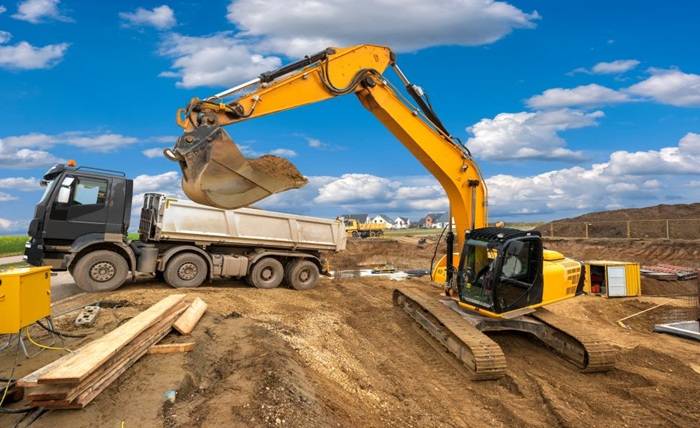Every construction site requires the right tools and equipment to keep operations safe, smooth, and on schedule. Whether you’re working on a high-rise building, road repairs, or residential projects, having the proper gear ensures efficiency and reduces the risk of accidents.
While each site may vary in its specific needs, some essential equipment remains consistent across all projects. These tools serve both practical and safety purposes, from heavy machinery to safety wear. It’s important to invest in durable, reliable, and job-specific items. Here’s a look at the must-haves that no construction site should be without.
Heavy Machinery: The Backbone of the Site
Large-scale equipment like compaction equipment, crawler dozers, excavators, compact excavators, backhoe loaders, motor graders, skid steers, and wheel loaders form the core of any construction operation. These machines handle critical tasks such as earthmoving, leveling, material handling, and shaping terrain. Without them, tasks that take minutes with a machine could take hours or days manually.
Operators must be trained and certified to use them safely and efficiently. Regular maintenance is key to avoiding costly delays or breakdowns on the job. Fortunately, most of these machines can be rented from various companies, like Border Equipment making them accessible for both small and large projects. No matter the size of the build, heavy machinery is indispensable.
Safety Gear: Protecting Workers on the Ground
On any job site, worker safety should always come first. Helmets, gloves, safety glasses, and steel-toed boots are common protective gear for reducing injury risk. One item that plays a particularly important role is Reflective Construction Work Shirts, which help ensure workers remain visible—especially in low-light conditions or during nighttime shifts. These shirts can make all the difference when it comes to visibility near moving machinery or traffic.
When worn properly, safety gear also encourages a culture of responsibility among team members. It’s not just about individual safety; it’s about looking out for each other. With proper protective gear, the likelihood of accidents and injury significantly decreases.
Site Barriers and Traffic Control Tools
Controlling access and directing traffic are necessary to keep both workers and passersby safe. Cones, barricades, and signage clearly mark hazardous zones or restricted areas. These tools are particularly important for sites near roads or populated areas. Temporary fencing can also prevent unauthorized entry and reduce theft or damage. Keeping the site organized and controlled helps reduce delays caused by confusion or accidents. These simple tools play a vital role in everyday operations. Using them properly can streamline movement and improve workflow around the site.
Safety Equipment: Ensuring Clean Site Boundaries
Keeping a construction site organized often means establishing clear borders for work areas and pathways. Many tools such as edging tools, temporary barriers, or materials for lining walkways—helps define these areas effectively. Not only does this help in maintaining safety, but it also improves the aesthetic and functional layout of the site.
For example, when building a commercial space, setting boundaries properly ensures materials stay in place and the surface is level. Well-defined borders also reduce the risk of tripping or machinery veering into unintended zones. Even smaller jobs benefit from having a clearly marked perimeter. It’s a simple addition that provides significant operational and safety benefits.
Power Tools and Hand Tools: For Detailed Work
Beyond large equipment, smaller tools are essential for daily tasks. Drills, saws, hammers, levels, and measuring tapes are needed for precision work and finishing touches. These tools might seem basic, but they’re used in nearly every phase of construction. Proper storage and maintenance keep them working efficiently and extend their lifespan.
Workers should always use the right tool for the task to avoid injuries or mistakes. In the hands of skilled workers, even the simplest tools can perform critical tasks. They’re the unsung heroes of construction.
Lighting Equipment: Work Around the Clock
Construction projects don’t always stop when the sun goes down. Proper lighting allows work to continue safely during the early morning or evening hours. Portable floodlights, tower lights, and headlamps ensure visibility across the site. Good lighting prevents trips, falls, and other accidents, especially when navigating uneven surfaces or using heavy machinery.
It’s also useful in enclosed areas like basements or tunnels. Planning for proper lighting can help maintain productivity even during low-light conditions. With the right setup, there’s no need to halt progress due to the time of day.
Safety Kits: First Aid Stations and Emergency Kits
Despite all precautions, accidents can still happen. That’s why every site must have accessible first aid stations and emergency kits. These should be fully stocked with supplies like bandages, antiseptics, and burn treatments. Quick access to medical help can prevent minor injuries from becoming major problems.
It’s also important to have someone trained in basic first aid on-site at all times. Emergency response plans should be posted and understood by everyone. While you hope to never need them, being prepared is part of responsible site management.
Conclusion
A successful construction project depends on more than just the strength of its structure—it relies on having the right tools, machines, and safety measures in place. From reflective shirts to heavy equipment, every item plays a role in ensuring that workers can do their jobs safely and efficiently. With a solid foundation of must-have equipment, construction sites can operate smoothly, meet deadlines, and protect their teams from harm.

